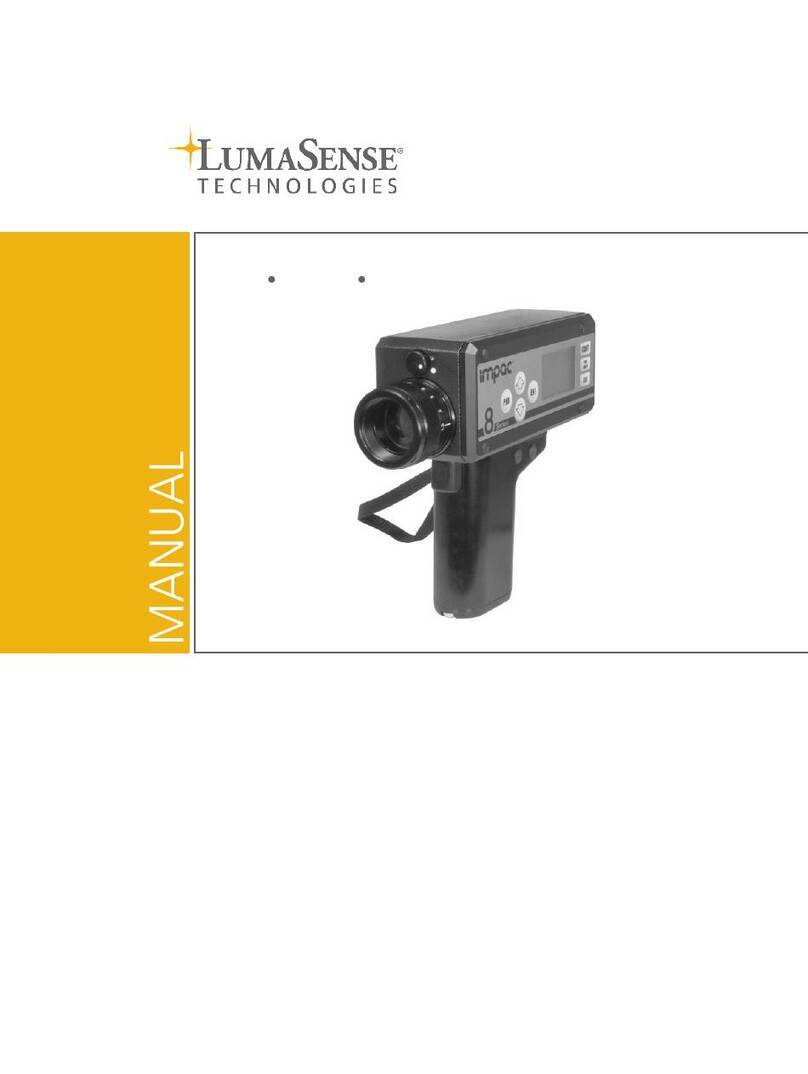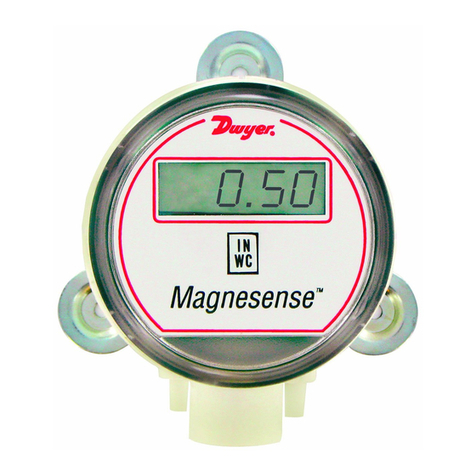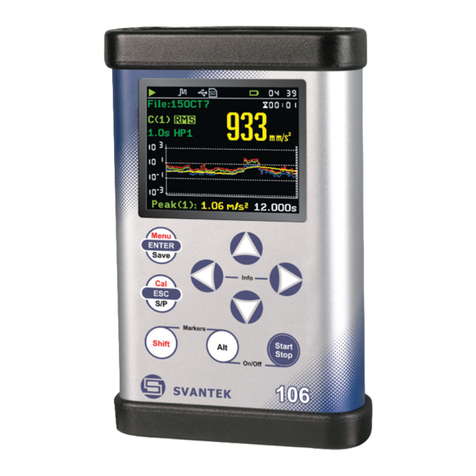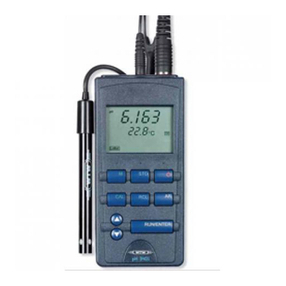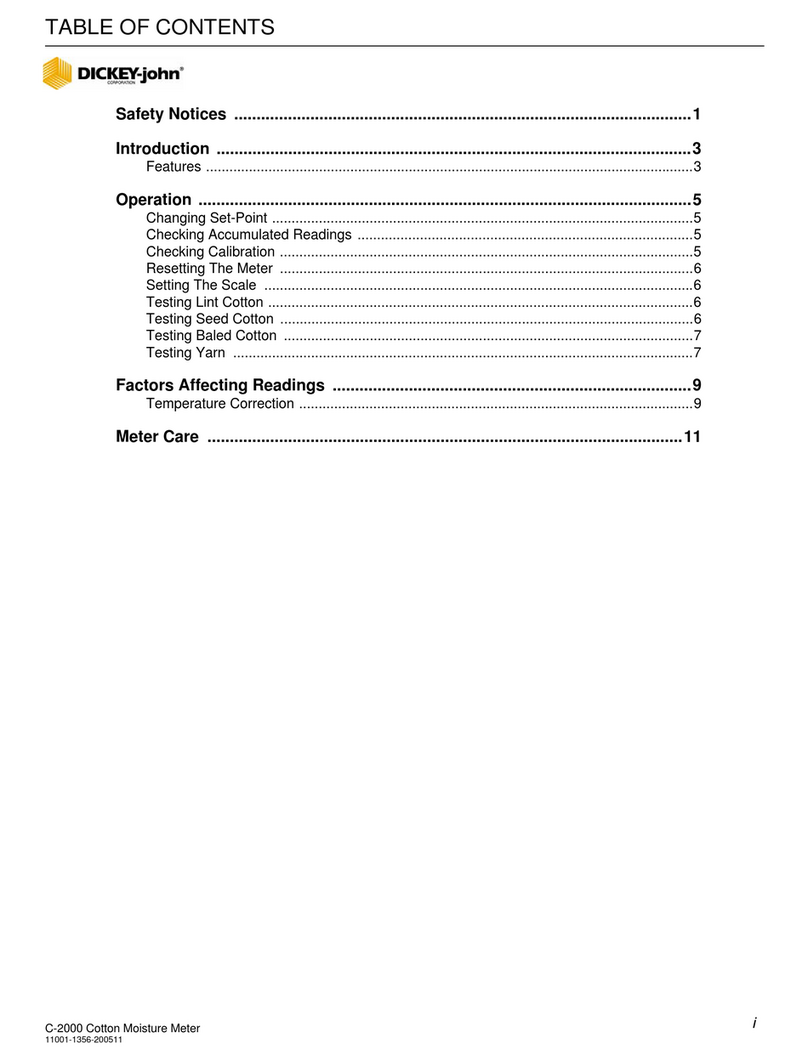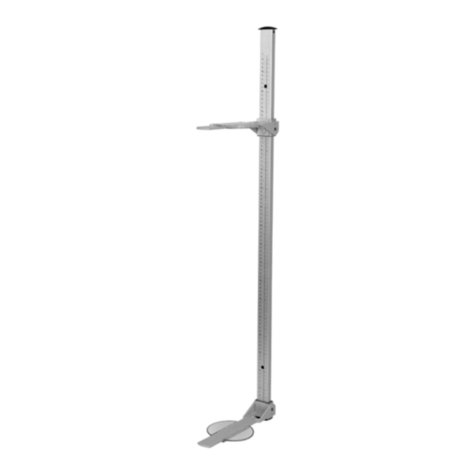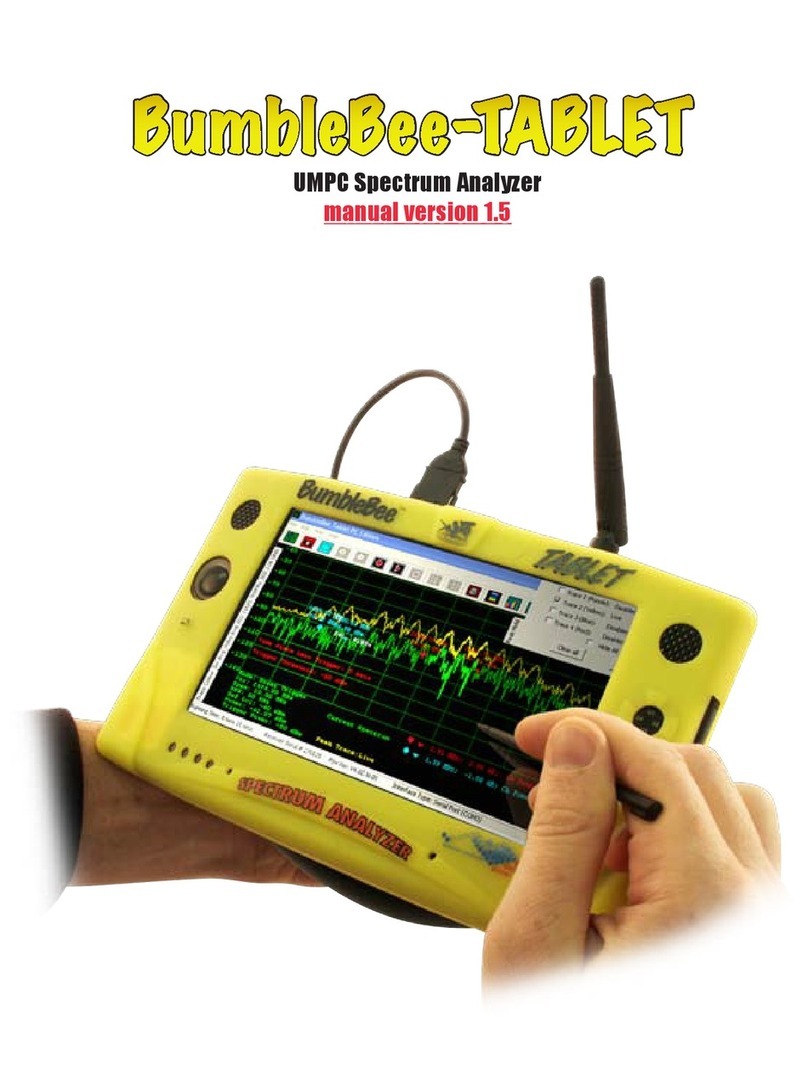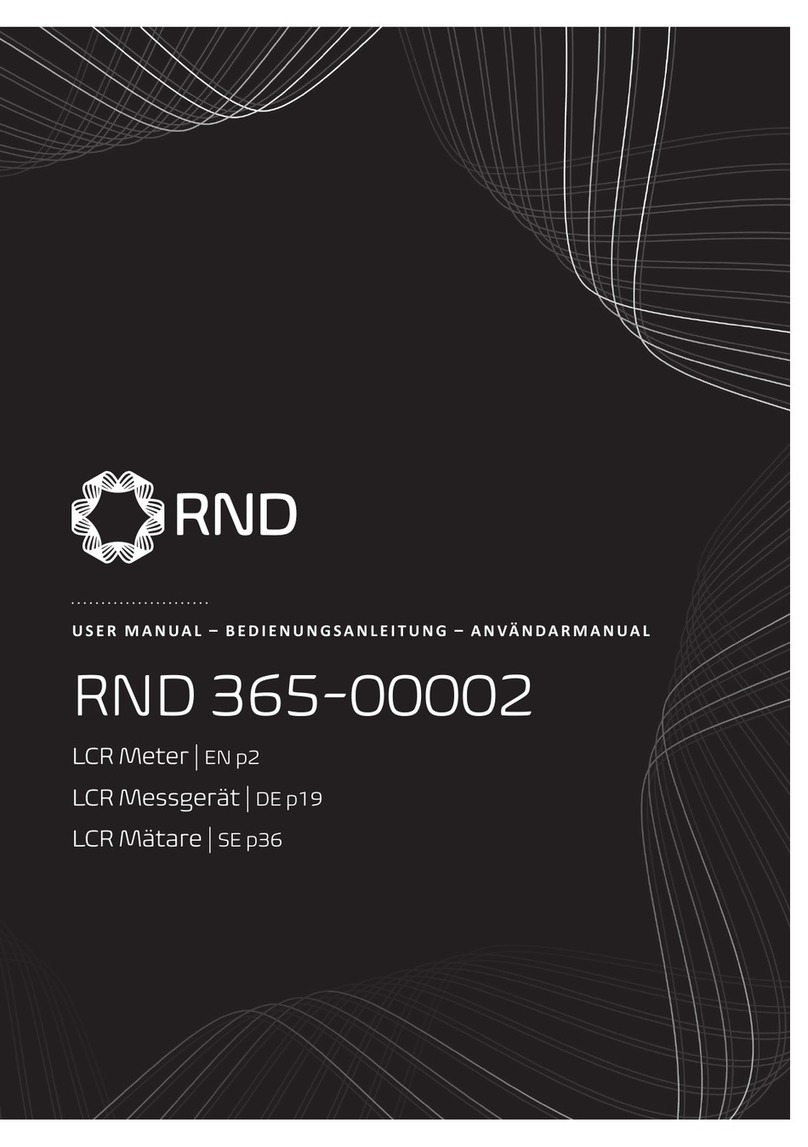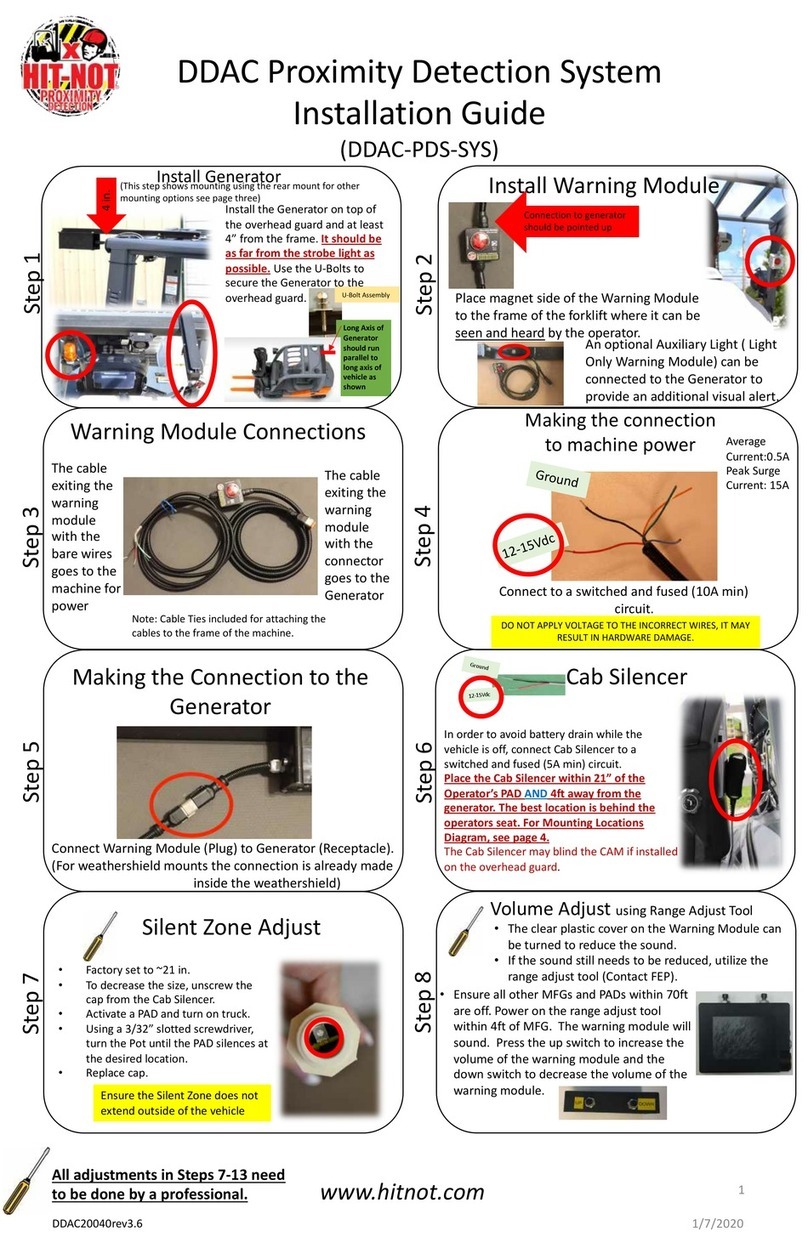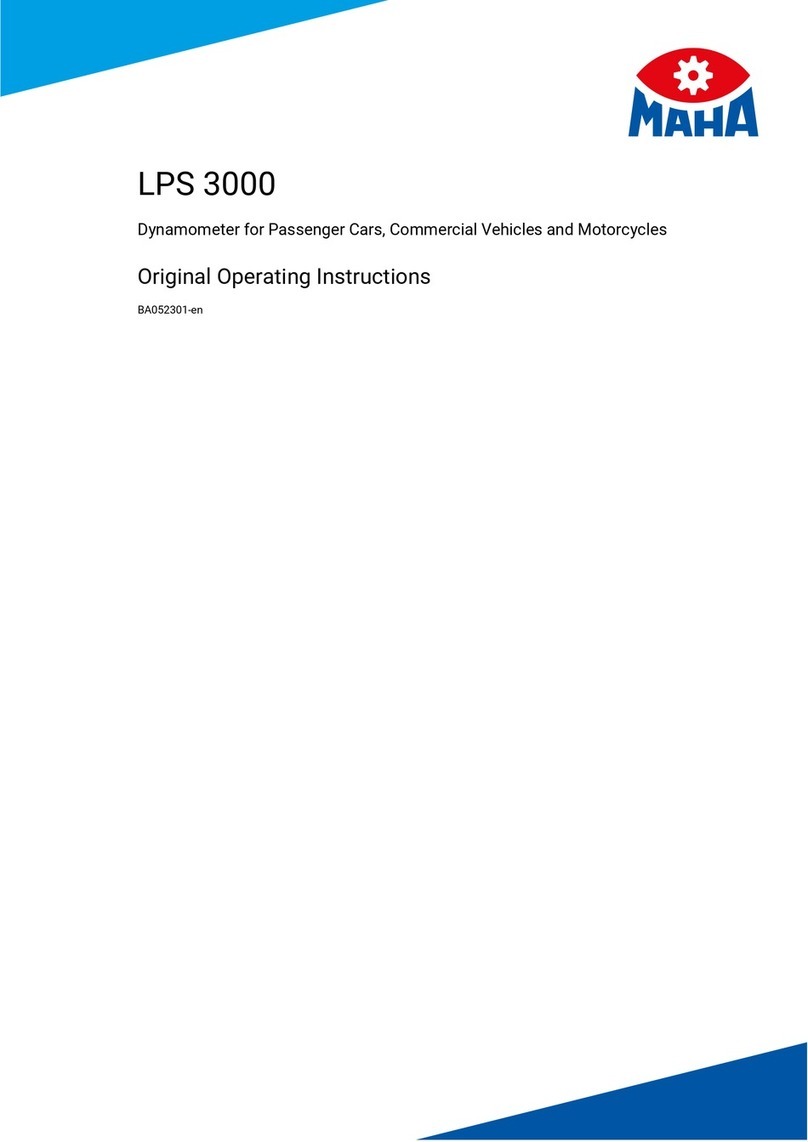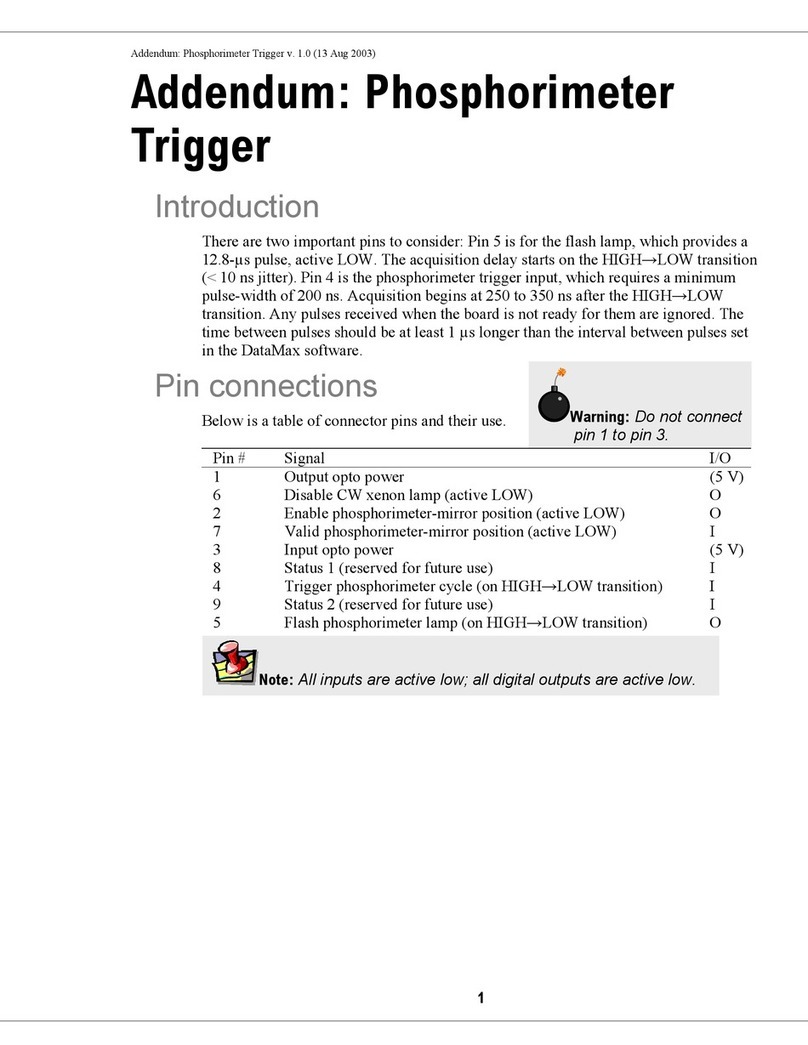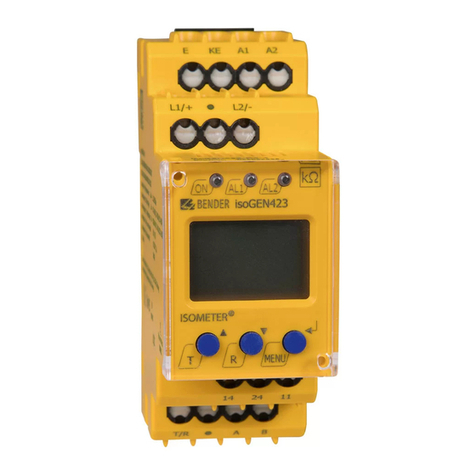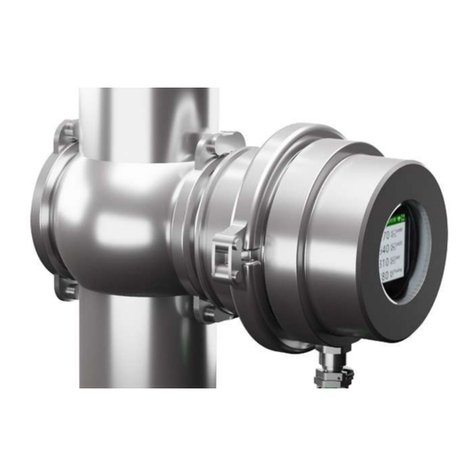Ronde & Schwarz NRX User manual

R&S®NRX
Power Meter
Getting Started
Getting Started
Version 05
1424707002
(>HÔÔ2)

This document describes the following R&S®NRX models:
●R&S®NRX (1424.7005.02)
© 2019 Rohde & Schwarz GmbH & Co. KG
Mühldorfstr. 15, 81671 München, Germany
Phone: +49 89 41 29 - 0
Fax: +49 89 41 29 12 164
Email: [email protected]
Internet: www.rohde-schwarz.com
Subject to change – Data without tolerance limits is not binding.
R&S® is a registered trademark of Rohde & Schwarz GmbH & Co. KG.
Trade names are trademarks of the owners.
1424.7070.02 | Version 05 | R&S®NRX
Throughout this manual, products from Rohde & Schwarz are indicated without the ® symbol , e.g.
R&S®NRX is indicated as R&S NRX.

Contents
R&S®NRX
3Getting Started 1424.7070.02 ─ 05
Contents
1 Safety Information................................................................. 5
2 Documentation Overview......................................................6
2.1 Getting Started Manual.........................................................................6
2.2 User Manuals and Help........................................................................ 6
2.3 Tutorials................................................................................................. 6
2.4 Basic Safety Instructions..................................................................... 6
2.5 Data Sheets and Brochures................................................................. 7
2.6 Release Notes and Open Source Acknowledgment (OSA)...............7
2.7 Application Notes, Application Cards, White Papers, etc.................7
3 Key Features.......................................................................... 8
4 Preparing for Use...................................................................9
4.1 Unpacking and Checking..................................................................... 9
4.1.1 Accessory List.........................................................................................9
4.2 Operating Conditions......................................................................... 10
4.3 Important Aspects for Test Setup......................................................10
4.4 Placing on a Bench Top......................................................................11
4.5 Mounting in a Rack............................................................................. 12
4.6 Connecting to the AC Power Supply................................................ 13
4.7 Switching On or Off............................................................................ 13
4.8 Connecting Power Sensors............................................................... 14
4.8.1 Sensor Connectors A to D.................................................................... 14
4.8.2 Optional Sensor Interface for R&S NRT (R&S NRX-B9)...................... 15
4.8.3 LAN Interface........................................................................................ 16
4.8.4 USB 2.0 Host Interfaces....................................................................... 16

Contents
R&S®NRX
4Getting Started 1424.7070.02 ─ 05
4.9 Connecting USB and External Devices............................................ 16
5 Instrument Tour................................................................... 17
5.1 Front Panel Tour..................................................................................17
5.1.1 Sensor Connector A and B................................................................... 17
5.1.2 Module Bay........................................................................................... 18
5.1.3 Touchscreen..........................................................................................19
5.1.4 Keys...................................................................................................... 19
5.1.5 USB Host Interface............................................................................... 21
5.1.6 On/Standby Key....................................................................................22
5.2 Rear Panel Tour...................................................................................23
5.2.1 Trig In / Out 2 and Out 1 / Trig Out Connectors.................................... 23
5.2.2 Ethernet Interface................................................................................. 24
5.2.3 USB Device Interface............................................................................24
5.2.4 USB Host Interface............................................................................... 24
5.2.5 AC Supply and Power Switch............................................................... 24
5.2.6 IEC 625/IEEE 488 Interface..................................................................24
5.2.7 Sensor Connectors C and D................................................................. 25
Index..................................................................................... 26

Safety Information
R&S®NRX
5Getting Started 1424.7070.02 ─ 05
1 Safety Information
The product documentation helps you to use the R&S NRX safely and efficiently.
Follow the instructions provided here and in the printed "Basic Safety Instruc-
tions". Keep the product documentation nearby and offer it to other users.
Intended use
The R&S NRX is designated for the development, production and verification of
electronic components and devices in industrial, administrative, and laboratory
environments. Use the R&S NRX only for its designated purpose. Observe the
operating conditions and performance limits stated in the data sheet.
Where do I find safety information?
Safety information is part of the product documentation. It warns you about the
potential dangers and gives instructions how to prevent personal injuries or dam-
age caused by dangerous situations. Safety information is provided as follows:
●The printed "Basic Safety Instructions" provide safety information in many lan-
guages and are delivered with the R&S NRX.
●Throughout the documentation, safety instructions are provided when you
need to take care during setup or operation.

Documentation Overview
R&S®NRX
6Getting Started 1424.7070.02 ─ 05
2 Documentation Overview
This section provides an overview of the R&S NRX user documentation. Unless
specified otherwise, you find the documents on the R&S NRX product page at:
www.rohde-schwarz.com/manual/NRX
2.1 Getting Started Manual
Introduces the R&S NRX and describes how to set up and start working with the
product. A printed version is delivered with the instrument.
2.2 User Manuals and Help
Contains the description of all instrument modes and functions. It also provides
an introduction to remote control, a complete description of the remote control
commands with programming examples, and information on maintenance, instru-
ment interfaces and error messages. Includes the contents of the getting started
manual .
2.3 Tutorials
Tutorials offer guided examples and demonstrations on operating the R&S NRX.
They are provided on the product page of the internet.
2.4 Basic Safety Instructions
Contains safety instructions, operating conditions and further important informa-
tion. The printed document is delivered with the instrument.
Basic Safety Instructions

Documentation Overview
R&S®NRX
7Getting Started 1424.7070.02 ─ 05
2.5 Data Sheets and Brochures
The data sheet contains the technical specifications of the R&S NRX. It also lists
the firmware applications and their order numbers, and optional accessories.
The brochure provides an overview of the instrument and deals with the specific
characteristics.
See www.rohde-schwarz.com/brochure-datasheet/NRX
2.6 Release Notes and Open Source Acknowledg-
ment (OSA)
The release notes list new features, improvements and known issues of the cur-
rent firmware version, and describe the firmware installation.
The open source acknowledgment document provides verbatim license texts of
the used open source software.
See www.rohde-schwarz.com/firmware/NRX
2.7 Application Notes, Application Cards, White
Papers, etc.
These documents deal with special applications or background information on
particular topics.
See www.rohde-schwarz.com/application/NRX
Application Notes, Application Cards, White Papers, etc.

Key Features
R&S®NRX
8Getting Started 1424.7070.02 ─ 05
3 Key Features
The R&S NRX supports:
●Easy RF power measurements
●Multi-channel measurements
●RF pulse analysis
●System integration
The R&S NRX is a versatile, user-friendly base unit.
●Straightforward numerical and graphical display of measured values, plus
intuitive operation with touchscreen-based graphical user interface
●Supports up to four R&S NRP and R&S NRQ6 power sensors.
●Supports all sensor-dependent measurement functions
●Hardware interfaces for remote control and triggering
●Code emulation of the R&S NRP2
●Optional high-precision CW and pulse mode reference source module
●Optional power reflection measurements with R&S NRT directional power
sensors
See also the R&S NRX fact sheet at www.rohde-schwarz.com.

Preparing for Use
R&S®NRX
9Getting Started 1424.7070.02 ─ 05
4 Preparing for Use
●Unpacking and Checking.................................................................................. 9
●Operating Conditions...................................................................................... 10
●Important Aspects for Test Setup.................................................................... 10
●Placing on a Bench Top...................................................................................11
●Mounting in a Rack......................................................................................... 12
●Connecting to the AC Power Supply...............................................................13
●Switching On or Off......................................................................................... 13
●Connecting Power Sensors.............................................................................14
●Connecting USB and External Devices...........................................................16
4.1 Unpacking and Checking
Check the equipment for completeness using the delivery note and the accessory
lists for the various items. Check the R&S NRX for any damage. If there is dam-
age, immediately contact the carrier who delivered the R&S NRX. Make sure not
to discard the box and packing material.
Packing material
Retain the original packing material. If the instrument needs to be transpor-
ted or shipped later, you can use the material to protect the control ele-
ments and connectors.
4.1.1 Accessory List
The R&S NRX comes with the following accessories:
●Printed getting started manual
●Multilingual safety brochure
●Additive data sheet ref. China ROHS
●Country-specific power cable
Unpacking and Checking

Preparing for Use
R&S®NRX
10Getting Started 1424.7070.02 ─ 05
4.2 Operating Conditions
Specific operating conditions are required to ensure accurate measurements and
to avoid damage to the R&S NRX and connected devices. Before switching on
the R&S NRX, observe the information on appropriate operating conditions provi-
ded in the basic safety instructions and the data sheet of the R&S NRX.
In particular, ensure the following:
●The R&S NRX is dry and shows no sign of condensation.
●The ambient temperature does not exceed the range specified in the data
sheet.
●Signal levels at the input connectors are all within the specified ranges.
●Signal outputs are connected correctly and are not overloaded.
4.3 Important Aspects for Test Setup
Preventing electrostatic discharge (ESD)
Electrostatic discharge is most likely to occur when you connect or disconnect a
DUT or test fixture to the instrument's test ports.
►NOTICE! Risk of electrostatic discharge (ESD). Electrostatic discharge (ESD)
can damage the electronic components of the R&S NRX and the device under
test (DUT).
Ground yourself to avoid electrostatic discharge (ESD) damage:
● Use a wrist strap and cord to connect yourself to the ground.
● Use a conductive floor mat and heel strap combination.
EMI impact on measurement results
Electromagnetic interference (EMI) may affect the measurement results.
To suppress generated electromagnetic interference (EMI):
●Use suitable shielded cables of high quality. For example, use double-shielded
RF and LAN cables.
●Always terminate open cable ends.
●Note the EMC classification in the data sheet.
Important Aspects for Test Setup

Preparing for Use
R&S®NRX
11Getting Started 1424.7070.02 ─ 05
●Do not use USB connecting cables exceeding 5 m.
4.4 Placing on a Bench Top
Place the R&S NRX on a stable and level surface. The R&S NRX can be used in
horizontal position, standing on its feet, or with the support feet on the bottom
extended. Do not place anything on top of the R&S NRX, if the R&S NRX is not in
a level position.
Risk of injury if feet are folded out
The feet can fold in if they are not folded out completely or if the instrument
is shifted. Collapsing feet can cause injury or damage the instrument.
●Fold the feet completely in or out to ensure stability of the instrument.
Never shift the instrument when the feet are folded out.
●When the feet are folded out, do not work under the instrument or place
anything underneath.
●The feet can break if they are overloaded. The overall load on the fol-
ded-out feet must not exceed 500 N.
Placing on a Bench Top

Preparing for Use
R&S®NRX
12Getting Started 1424.7070.02 ─ 05
Risk of injury when stacking instruments
A stack of instruments can tilt over and cause injury if not stacked correctly.
Furthermore, the instruments at the bottom of the stack can be damaged
due to the load imposed by the instruments on top.
Observe the following instructions when stacking instruments:
●Never stack more than three instruments. If you need to stack more
than three instruments, install them in a rack.
●The overall load imposed on the lowest instrument must not exceed
500 N.
●It is best if all instruments have the same dimensions (width and length).
If you need to stack smaller instruments on the top, the overall load
imposed on the lowest instrument must not exceed 250 N.
●If the instruments have foldable feet, fold them in completely.
4.5 Mounting in a Rack
1. Order one of the rack adapter kits designed for the R&S NRX. For the order
number, see data sheet.
2. Follow the installation instructions provided with the adapter kit.
3. NOTICE! Insufficient airflow can cause overheating and thus damage the R&S
NRX.
Mounting in a Rack

Preparing for Use
R&S®NRX
13Getting Started 1424.7070.02 ─ 05
Develop and implement an efficient ventilation concept.
4.6 Connecting to the AC Power Supply
The R&S NRX can be used with different AC power voltages and adapts itself
automatically to them. Adjusting the R&S NRX to a particular AC supply voltage is
therefore not required. Refer to the data sheet for the requirements of voltage and
frequency.
The power switch can be set to two positions:
●[0]: The instrument is disconnected from the mains.
●[I]: The instrument is power-supplied. It is either ready for operation
(STANDBY) or in operating mode.
1. Plug the AC power cable into the AC power connector on the rear panel of the
R&S NRX. Only use the power cable delivered with the R&S NRX.
2. Plug the AC power cable into a power outlet with ground contact. The R&S
NRX complies with safety class EN61010-1.
The required ratings are listed next to the AC connector and in the data sheet.
Further information:
●Chapter 5.2.5, "AC Supply and Power Switch", on page 24
4.7 Switching On or Off
The possible instrument states are described in Chapter 5.1.6, "On/Standby Key",
on page 22.
To switch on the R&S NRX
1. To turn on the power, press the AC power switch at the rear to position [I]
(On).
After power-up, the R&S NRX is in standby or ready state, depending on the
position of the on/standby key.
2. If the R&S NRX is in standby state, press the on/standby key.
Switching On or Off

Preparing for Use
R&S®NRX
14Getting Started 1424.7070.02 ─ 05
The R&S NRX initiates its startup procedure. It boots the operating system
and starts the instrument firmware.
If the previous session ended regularly, the R&S NRX uses the settings from
the last session.
3. If you want to return to a defined initial state, perform a preset.
To switch off the R&S NRX
1. Press the [on/standby] key.
The R&S NRX saves its current settings for reuse in the next session and
changes into the standby state.
2. To power down the R&S NRX completely, set the AC power switch to position
[0] (Off).
Further information:
●Chapter 5.1.6, "On/Standby Key", on page 22
4.8 Connecting Power Sensors
The R&S NRX supports a wide range of R&S power sensors. See the data sheet
for detailed information.
Depending on the power sensor, you have different choices for connecting it.
4.8.1 Sensor Connectors A to D
See Chapter 5.1.1, "Sensor Connector A and B", on page 17 and Chap-
ter 5.2.7, "Sensor Connectors C and D", on page 25.
Suitable for:
●USB and LAN power sensors
●R&S NRQ6
●R&S NRP‑Zxx power sensors
Connecting Power Sensors

Preparing for Use
R&S®NRX
15Getting Started 1424.7070.02 ─ 05
NRQ6
Frequency Selective Power Sensor
LAN PoE+
Host
Interface
Sample Clock I/O (Default: 120 MHz)
LO I/0
Figure 4-1: Setup with an R&S power sensor (example)
1 = Signal source
2 = R&S power sensor
3 = Host Interface connector
4 = R&S NRP‑ZK8
5 = Sensor connector of the R&S NRX
6 = R&S NRX
Use an R&S NRP‑ZK8 cable to connect an R&S power sensor to the R&S NRX.
If you use an R&S NRP‑ZK6 cable, the reference clock and trigger are not sup-
ported.
1. 8-pin female connector of R&S NRP‑ZK8:
a) Insert the screw-lock cable connector into the host interface of the R&S
power sensor.
b) Tighten the union nut manually.
2. 8-pin male connector of R&S NRP‑ZK8:
a) Insert this connector into one of the sensor ports of the R&S NRX.
3. Connect the RF connector of the R&S power sensor to the signal source. For
details, see the user manual of the R&S power sensor.
Note: Incorrectly connecting/disconnecting an R&S power sensor can dam-
age the power sensor or lead to erroneous results.
4.8.2 Optional Sensor Interface for R&S NRT (R&S NRX-B9)
See Chapter 5.1.2, "Module Bay", on page 18.
Suitable for R&S NRT directional power sensors.
► Connect the R&S NRT-Zxx power sensor between source and load.
Connecting Power Sensors

Preparing for Use
R&S®NRX
16Getting Started 1424.7070.02 ─ 05
4.8.3 LAN Interface
See Chapter 5.2.2, "Ethernet Interface", on page 24.
Suitable for LAN power sensors.
4.8.4 USB 2.0 Host Interfaces
See Chapter 5.1.5, "USB Host Interface", on page 21 and Chapter 5.2.4, "USB
Host Interface", on page 24.
Suitable for USB power sensors.
4.9 Connecting USB and External Devices
Apart from connecting USB power sensors, you can use the USB interfaces to
connect USB devices. You can increase the number of connected devices by
using USB hubs.
Due to the large number of available USB devices, there is almost no limit to the
possible expansions. In the following, useful USB devices are listed exemplarily:
●Memory stick for easy transfer of data to/from a computer (e.g. firmware
updates).
●Mouse if you prefer this way of operation over a touchscreen.
Connecting USB and External Devices

Instrument Tour
R&S®NRX
17Getting Started 1424.7070.02 ─ 05
5 Instrument Tour
●Front Panel Tour..............................................................................................17
●Rear Panel Tour.............................................................................................. 23
5.1 Front Panel Tour
Figure 5-1: Front View of R&S NRX
1 = Module bay for optional connectors, see Chapter 5.1.2, "Module Bay", on page 18.
2 = Sensor connectors A and B, see Chapter 5.1.1, "Sensor Connector A and B", on page 17.
3 = Touchscreen, see Chapter 5.1.3, "Touchscreen", on page 19.
4 = Keys, see Chapter 5.1.4, "Keys", on page 19.
5 = Cursor keys, see "Cursor keys" on page 21.
6 = USB host interface, see Chapter 5.1.5, "USB Host Interface", on page 21.
7 = On/standby key, see Chapter 5.1.6, "On/Standby Key", on page 22.
5.1.1 Sensor Connector A and B
See (2) in Figure 5-1.
Sensor connectors A and B are used to connect the R&S NRP power sensors
and the R&S NRQ6. For details on the supported power sensors, see the data
sheet.
The complete functional range, including external trigger and reference clock for
the synchronization of connected sensors, is provided by these connectors.
Front Panel Tour

Instrument Tour
R&S®NRX
18Getting Started 1424.7070.02 ─ 05
Further information:
●Chapter 4.8, "Connecting Power Sensors", on page 14
5.1.2 Module Bay
See (1) in Figure 5-1.
Two options fit in this bay. If you have both options, you can exchange them, see
"To exchange the option" on page 18.
If no option is installed, the module bay is closed by a cover.
Sensor check source (R&S NRX-B1)
Used as a power reference for testing the connected power sensors and the
cabling. The LED of the sensor check source (R&S NRX-B1) shows the state,
see Table 5-1.
You can remove the option and send it to Rohde & Schwarz for calibration. Con-
tact the Rohde & Schwarz customer service.
Table 5-1: Possible states
Illumination State Signal output setting
Off No signal is generated. "Off"
Steady green Continuous wave is output. "CW"
Blinking green Pulse signal is output. "Pulse"
Blinking red Settings conflict exists.
For example if "Pulse" is set and the
power level is set to 20 dBm.
"CW" or "Pulse"
Sensor interface for R&S NRT (R&S NRX-B9)
Provides an optional power sensor connector to connect an R&S NRT-Zxx power
sensor. For supported power sensors, see the data sheet.
To exchange the option
1. Press the latch to the right, using your thumb nail or a small pen.
Front Panel Tour

Instrument Tour
R&S®NRX
19Getting Started 1424.7070.02 ─ 05
2. Pull the option from its casing.
3. Insert the other option.
4. Press until you hear a click when the latch locks.
Further information:
●Chapter 4.8, "Connecting Power Sensors", on page 14
5.1.3 Touchscreen
See (3) in Figure 5-1.
The R&S NRX displays results in panes. Depending on the measurement mode,
values are displayed digitally or graphically.
False triggers of the touch panel in the presence of static electricity
If an object (e.g. a human finger) that is charged with static electricity is
brought near the touch panel, false triggers can occur.
This behavior is caused by the principle of operation of a PCAP (projected
capacitive) touch panel.
5.1.4 Keys
See (4) in Figure 5-1.
[Esc] / Local
If you press shortly:
●Changes to the next-higher hierarchy level.
●Escapes from the entry mode in text boxes and lists.
●Closes dialogs and menus without losing any entries that have been made.
Front Panel Tour

Instrument Tour
R&S®NRX
20Getting Started 1424.7070.02 ─ 05
●Switches from remote control mode (all controls disabled) to manual opera-
tion.
If you press and hold:
●Goes to the start dialog that shows an overview of the active measurements.
Screenshot
Creates a screenshot of the current display.
[1Trig] / Delete
●Controls the measurements depending on the trigger mode:
– For all trigger modes except "Single", starts and stops the measurement.
– For the "Single" trigger mode, enables and triggers the measurement.
Changes of the trigger state apply to all measurements.
●Resets the auxiliary values that provide additional information about the mea-
sured values.
●Deletes numbers or text in a field so that you can enter a new value.
Enter
●Confirms entries in text fields, dialogs and selections in lists.
●Shows a frame around the control in focus. You can change the focus using
the Cursor keys.
[Freq]
Sets the carrier frequency of the applied signal. This value is used for frequency-
response correction of the measurement result.
Favorites
Reserved for future use.
Front Panel Tour
Table of contents
Other Ronde & Schwarz Measuring Instrument manuals

Ronde & Schwarz
Ronde & Schwarz R&S FPL1007-P6 User manual
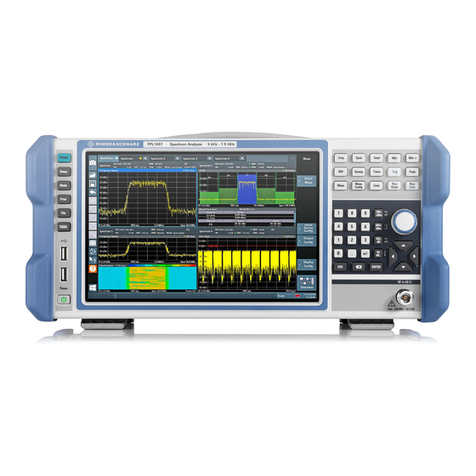
Ronde & Schwarz
Ronde & Schwarz R&S FPL1000 User manual

Ronde & Schwarz
Ronde & Schwarz ZVH4 User manual
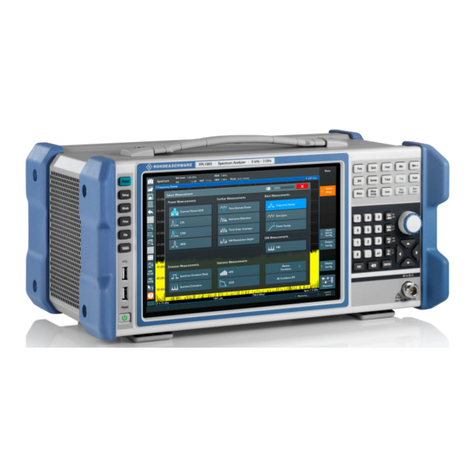
Ronde & Schwarz
Ronde & Schwarz FPL Series User manual
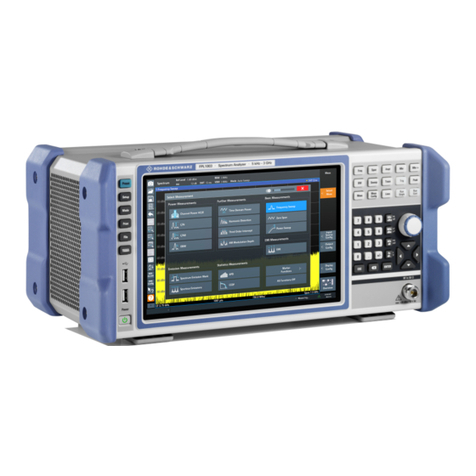
Ronde & Schwarz
Ronde & Schwarz R&S FPL1014 User manual

Ronde & Schwarz
Ronde & Schwarz R&S RT-ZC20 User manual
